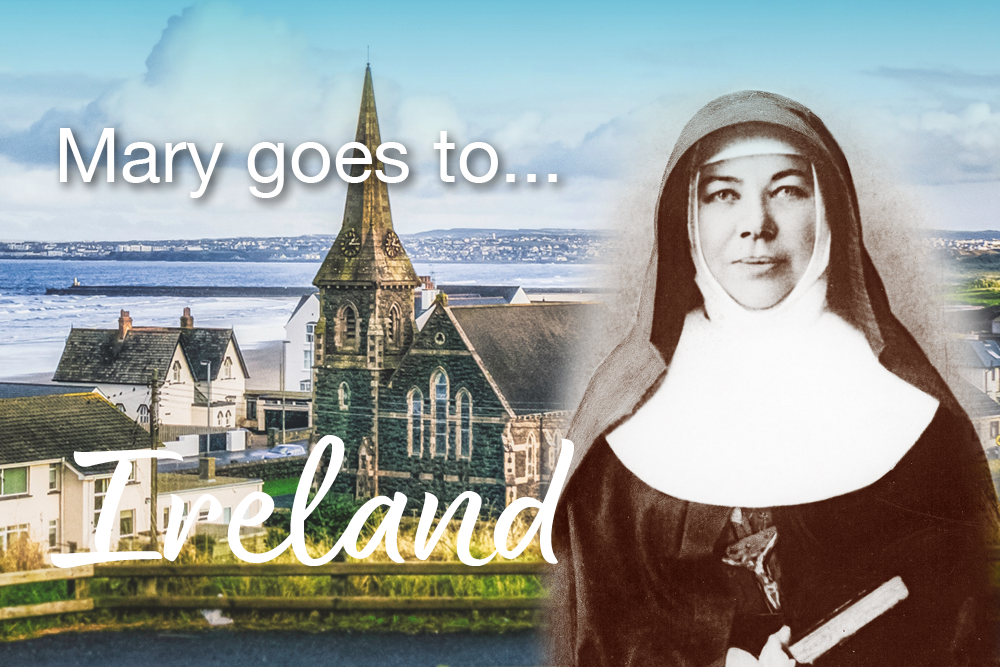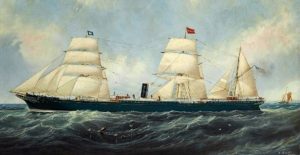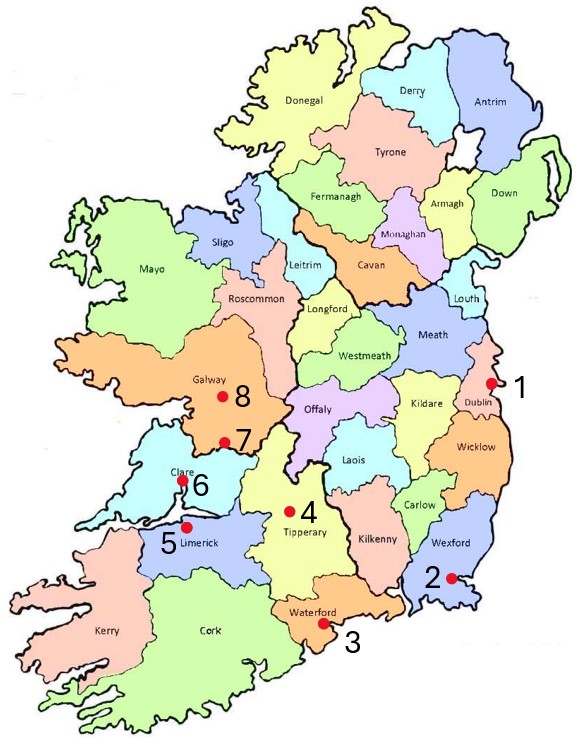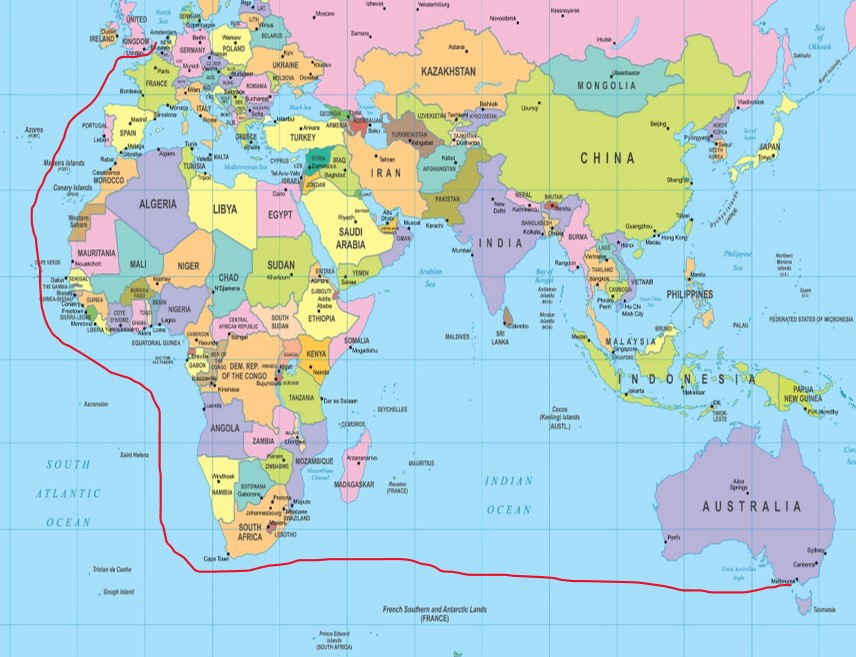
To celebrate 150 years since Mary MacKillop embarked on her first overseas journey (March 1873 – December 1874), the Sisters of Saint Joseph share reflections and details from Mary’s travels to and from Europe – sourced from Mary’s letters and Congregational Archives. This is the final journey in the series.
Mary MacKillop went to Rome in 1873 to have the Rule approved – a task that took the best part of two years. Towards the end of those two years, Mary visited England, Scotland and Ireland hoping to find some women to come to Australia to join the fledgling Institute.
Mary realised that she needed financial backing to bring young women back to Sydney with her. She decided to go to Dublin where she was kindly received by Cardinal Cullen on 8 June 1873. This was the first of her three visits to Ireland, and she found lodgings in Gardiner Street, near the Sisters of Charity. She visited schools, seeking postulants for whom she needed funding to bring them to Australia. She experienced both a mixture of fear and an extraordinary confidence in the power of God to help her in her work for Him. Many young women promised to join her.
She left for London in early July and was advised by Cardinal Cullen to return to recruit more young women to assist in bringing to life her vision to provide education for the poor. Mary returned to London knowing that she needed to organise postulants, seek priests for the Adelaide diocese and beg for funds for the young women travelling to Australia with her.

Mary was back in Ireland on 6 August, determined to seek young women to join the Institute. She remained for two months and travelled around southern Ireland as well as visiting the families of Irish Sisters who were already members of the Institute.
On 11 August, armed with a letter from Monsignor Kirby, she set out for Wexford. From there she went to Waterford, where the Mercy Sisters with whom she expected to stay, thought her letters were fakes. This circumstance helped when she visited the Bishop as he mellowed considerably when her heard of her setback at the Convent. Mary strongly believed in the Providence of God and saw his hand in this event too.
Mary was next in Dungarvan and Cappoquin where she endeavoured to find the relatives of the Irish Sisters and priests in Australia. The Sisters in Dungarvan had found four postulants for her and gave her mementoes for the Irish Sisters in Australia. The Cistercian (Trappist) monks near Cappoquin not only assured her of trying to find postulants for her but gave her a “diploma of association by which we have a share in all their good works etc”.
Mary then travelled to Limerick, Ennis in County Clare, Gort and Loughrea both in County Galway and, finally made her way back to Dublin. She was delighted that, by then, she had recruited eight more postulants and more inquiries were being made.
Mary returned to London in early October to find funds for the travellers and for the transport of the books for school supplies and the library. A receipt dated 12 October 1874, indicated that travel to Melbourne was booked for twelve people headed by Mary MacKillop on the St Osyth of the Orient Line to depart on 31 October 1874.
On the departure date there were, in fact, 25 travellers – Mary and her band, three Dominican Sisters for Adelaide, three Good Shepherd Sisters for Melbourne, two priests and one student.
Mary had vast amounts of luggage including the schoolbooks and other supplies. They eventually all got on board and set sail from the South West India Dock in London bound for Melbourne via Plymouth. During the voyage, the Blessed Sacrament was kept and revered in Mary’s cabin. Mary and her group were blessed to have Mass each day, prayers together and many discussions about the Sisters of Saint Joseph and Australia in general. Those interactions soothed the loneliness of the new postulants on leaving their homes and families.
These young women left their homes without any hope of return to visit family or friends. It was not until the 1980s that the Irish born Sisters were permitted to return home for a family visit. By this time, air travel had become the norm so that a visit to Ireland did not need six or seven weeks travelling by ship in both directions. It was a marvellous decision that Mary MacKillop would have understood since she was aware of what loneliness and a sense of isolation meant to émigrés.
Since the Suez Canal had not been opened, the route was south around Africa. Being a new well-engineered ship, it was hoped that it would arrive in Melbourne in 45 days, but stormy weather demanded a detour to St Jago. Nevertheless, the St Osyth arrived in Melbourne in 49 days (a new record) having covered 12,247 miles. Mary was delighted to have been met by her mother – a moment of great joy.
Mary and her companions then were to travel to Adelaide. Their ship was delayed so they had to stay on board for a few days. Eventually they did reach Port Adelaide on 4 January 1875. No one was there to meet them so they took a train to Adelaide, much to the embarrassment of Bishop Reynolds who did manage to meet them at the train station.
Maria Casey rsj
Mary’s Journey in Ireland

1: Dublin → 2: Wexford → 3: Dungarvan → 4: Cappoquin (Mt Melleray) → 5: Limerick → 6: Ennis → 7: Gort → 8: Loughreagh.
Mary’s trip from London back to Melbourne, Australia

[1] St Osyth was a new ship with the newest engineering having both steam and sails. On 31 October 1874 she made a round voyage from London – Cape Town – Melbourne. So Mary MacKillop and companions were on the first sailing to Australia. Her last sailing on this route started on 30 June 1877 and in 1879, she was sold to R. Rubbatino of Genoa and renamed Singapore.
